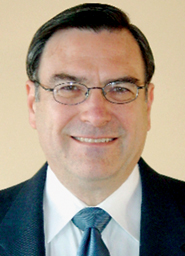The Securities and Exchange Commission and other regulators had a busy year, addressing market concerns about how to create a more stable trading environment and restore confidence rattled by last year’s flash crash.

Regulators introduced a myriad of rules this year and floated new proposals to fix market structure flaws that led to the May 6, 2010 event and to get a better handle on the forces driving the market. Upon examining the flash crash, many fingers pointed at high-frequency traders and their effect on the market-exacerbating market volatility and contributing to the severity of market’s price movements and liquidity. Also, the role of market makers in providing an orderly marketplace was questioned.
To recap, 2011 saw the implementation of the sponsored-access rule; the approval of the "large trader" rule; and proposals for a limit up/limit down single-stock circuit-breaker rule and a revamped marketwide circuit-breaker rule. On top of that, a new consolidated audit trail gained traction, as did several ideas to curb the impact of HFTs. Busy, indeed.
The large-trader rule requires large-volume traders to code their trade tickets with a unique identifier and time stamp for trades they execute. It targets both buyside and sellside shops doing significant volume. If requested by regulators, trade information would have to be available one day after a trade is completed.

The market-access rule requires brokers to screen all orders before they are sent to the exchanges. The rule prohibits traders from sending orders directly to exchanges and allows brokers to check for clearly erroneous "fat finger" errors or other obvious discrepancies.
Despite their preoccupation with implementing more requirements mandated by the recently enacted Dodd-Frank Act, regulators continue to float new proposals to fine-tune the market structure and keep trades flowing smoothly. A limit up/limit down proposal was pitched as an improvement to the current circuit-breaker rule. Other ideas being discussed include a minimum time requirement for quotes, a message traffic tax and specific market-maker obligations.
However, next year’s most likely change to market structure will be the implementation of a consolidated audit trail. An audit trail will help provide regulators with a detailed picture of what trading looks like, allowing them to pinpoint causes of market stress and implement fixes to prevent major strains from happening again.
"We have not seen the end of issues and concerns around the flash crash," said Annette L. Nazareth, partner at Davis Polk & Wardwell, and a former SEC Commissioner and director of the regulator’s Division of Trading and Markets. "The SEC continues to work on responses such as the implementation of a consolidated audit trail. This clearly is a priority, since the SEC remains concerned about the time it took to aggregate all the market data and analyze it."
Stephen Nelson, principal of the Nelson Law Firm, agreed. He said regulators still see a need for more policy making.
"Clearly, we are in the mode where there will be more regulation," he said.



